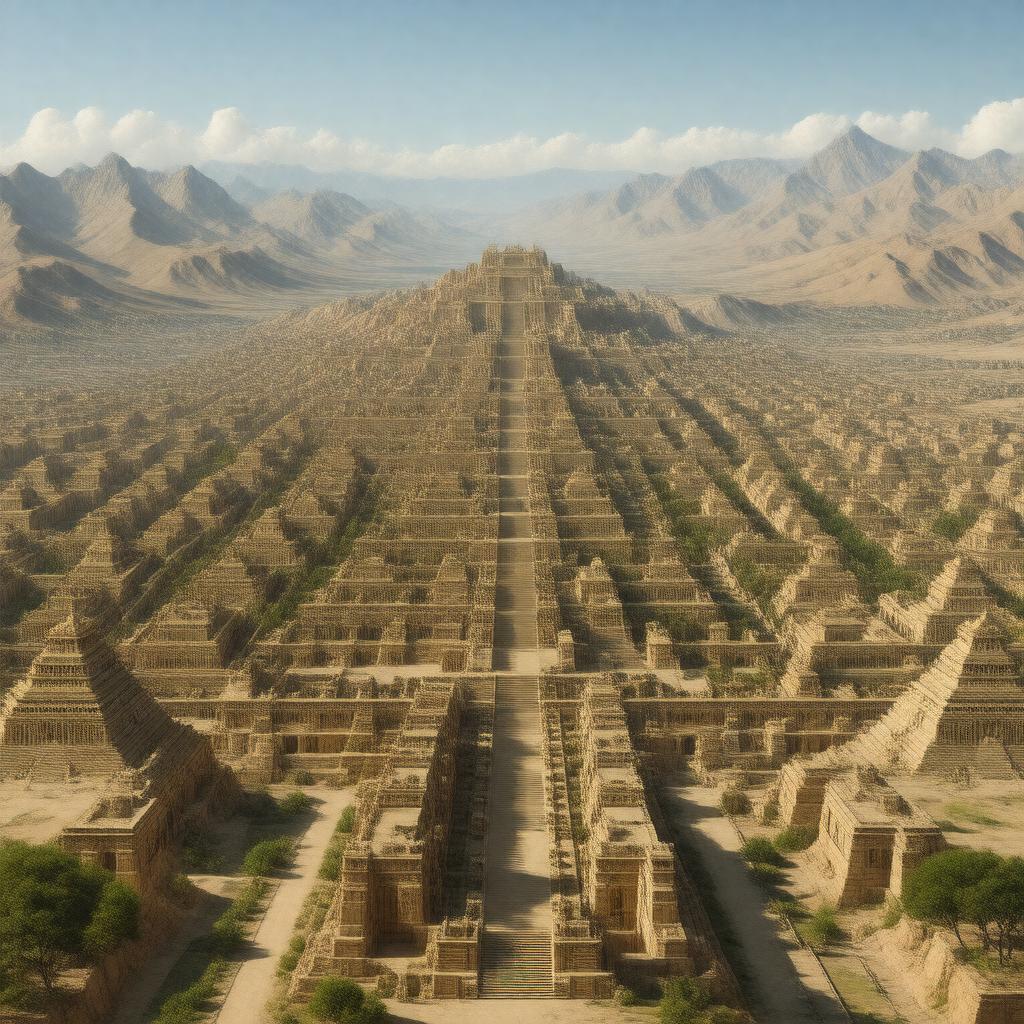Prompt
"Generate an image of a sprawling ancient cityscape with majestic ziggurats and palace structures, situated between the Tigris and Khosr rivers, depicting the Neo-Assyrian Empire in its prime, with architectural influences from Nineveh, Nimrud, and Dur-Sharrukin, during the reign of a notable ruler such as Ashurnasirpal II or Sargon II, in a realistic and detailed style, reminiscent of ancient Mesopotamian art, with cuneiform inscriptions and Aramaic script on display, set amidst a backdrop of rolling hills and fertile plains, with a majestic Lamassu statue guarding the entrance."

